You can use multiple methods to open Command Prompt as Administrator in Windows 11. This can be useful when you need to allow some console tool to finish its work with elevated privileges.
Advertisеment
In Windows 11, Microsoft offers Windows Terminal and PowerShell as modern replacements for the classic command prompt. Its shortcut has been moved from the Start menu to the Windows Tools folder, making it harder to launch it for a newcomer.
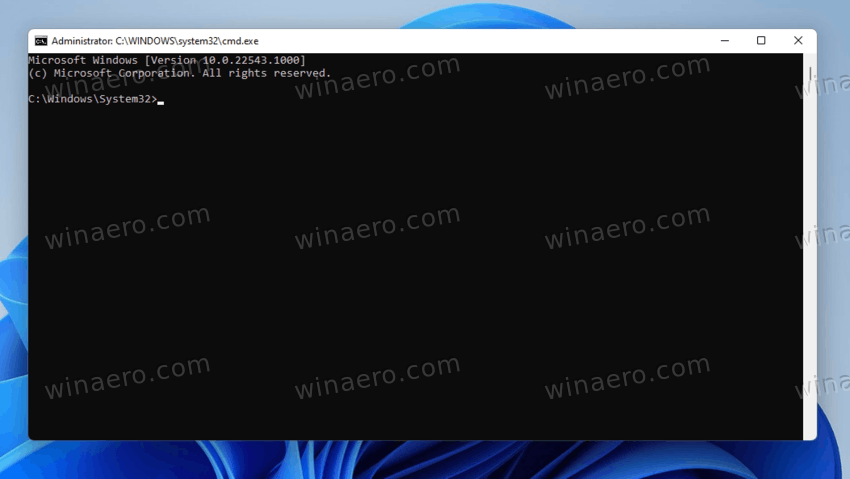
However, if you really need it to launch it elevated, you can easily do it. Obviously, to open a new command prompt as Administrator, you must be signed in to a user account with Administrator privileges. Otherwise, you will have to enter the Administrator password on a UAC prompt.
Windows 11: Open Command Prompt as Administrator
There are several methods to open Command Prompt with Administrator privileges, including classic methods and new options specific to Windows 11. To name some, you can use the Run dialog, Task Manager, File Explorer, Windows Search, and several other methods. Let's review all of them.
The Run dialog
- Press Win + R to open the Run box, then type
cmd. - Now, press the Ctrl + Shift + Enter keys to launch the command prompt elevated.
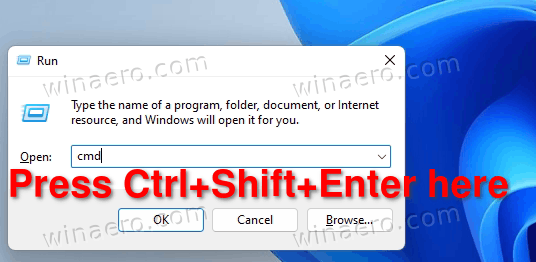
- If prompted, click Yes in the UAC.
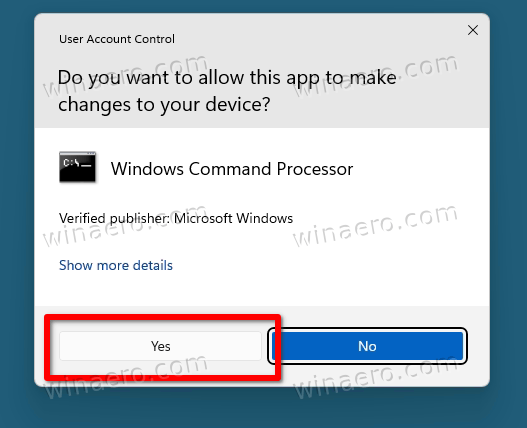
Done! The same way you can open the admin command prompt from the Task Manager.
It is important to note that if you have changed the console application to Windows Terminal, then cmd.exe will always open to the Windows Terminal tab, and not in its own window.
Open Elevated Command Prompt from Task Manager
- Press Ctrl + Shift + Esc to open Task Manager.
- Click File > Run new task. If you don't see the menu, click on More details.
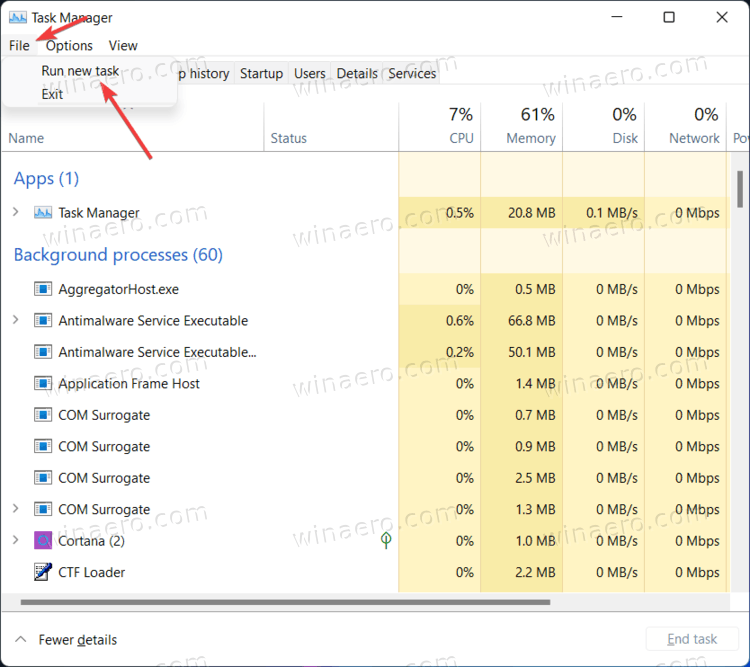
- Enter
cmdin the Create new task text box. - Enable the "Create this task with administrative privileges" checkbox.
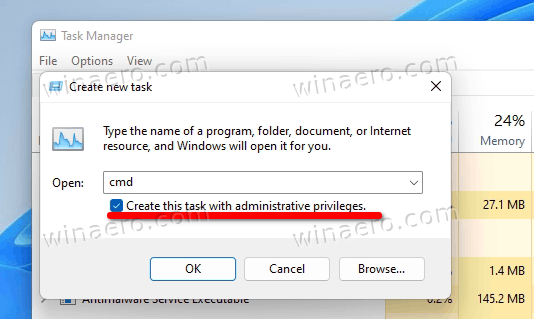
- Also, there is a hidden way to open it from task manager. Click the File menu, press and hold the Ctrl + Shift keys, and then click on Run new task. This will instantly open the elevated command prompt.
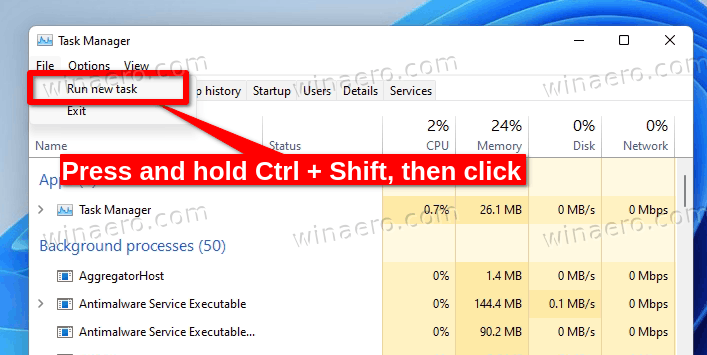
That is how to run Windows 11 Command Prompt as Administrator with the cmd.exe command.
Using Windows Terminal
To open the command prompt elevated inside the Windows Terminal, press Win + X or right-click the Start menu button.
Then, select Windows Terminal (Admin) from the menu.
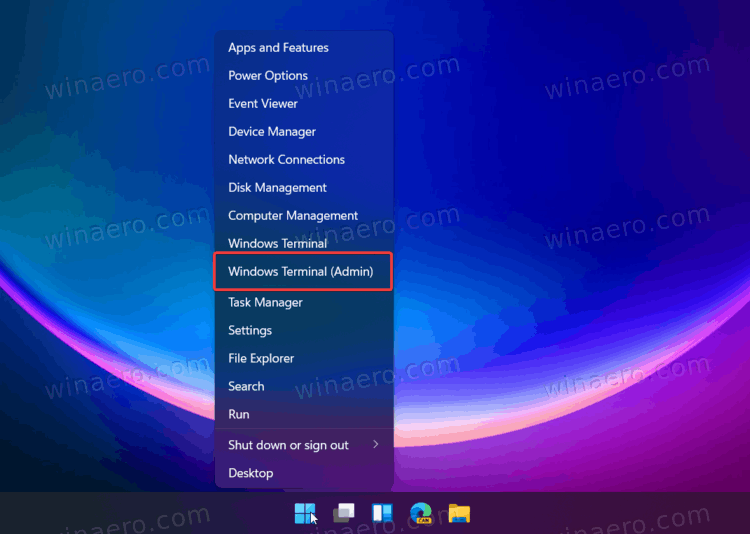
Finally, once open a new instance of Windows Terminal as Admin, select the command prompt profile from the arrow-down menu.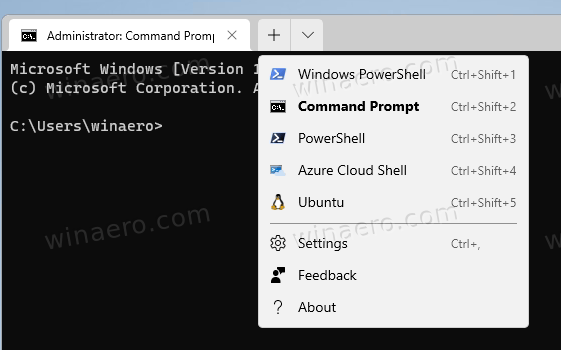
By default, it opens to PowerShell.
Open Command Prompt as Administrator from Windows Tools
Unlike Windows 10, where the Command Prompt was directly available in the Start menu, Windows 11 no longer shows it in "All apps". The latter keeps it hidden in the new "Windows Tools" folder. You can use the shortcut in there to open an elevated console.
To open Command Prompt as Administrator in Windows 11, do the following.
- Click the Start button and then click "All Apps".
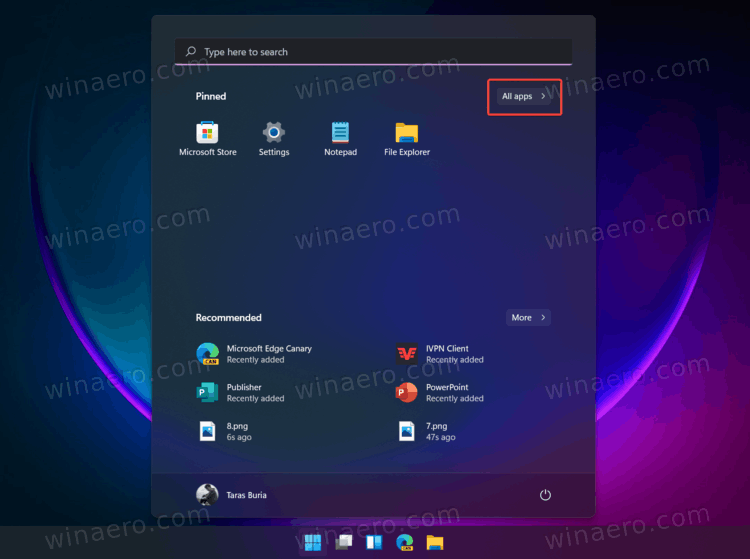
- Scroll down and find the "Windows Tools" folder. Click it.
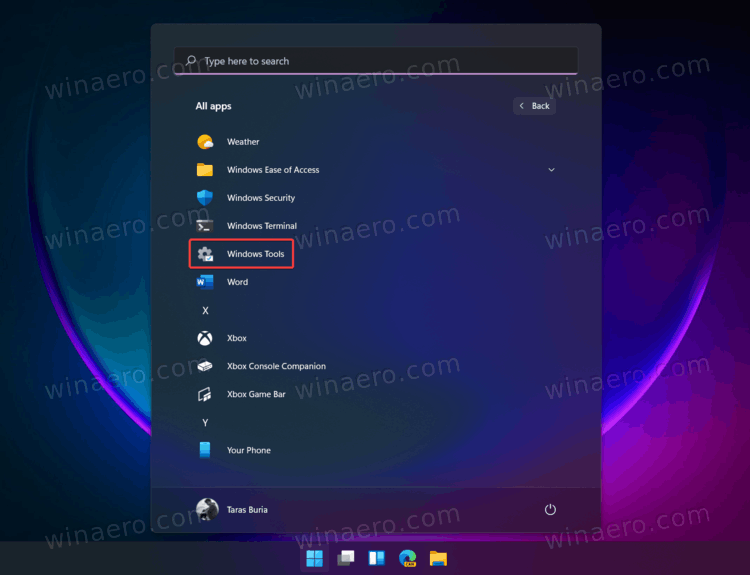
- Finally, right-click the Command Prompt shortcut and select Run as Administrator.
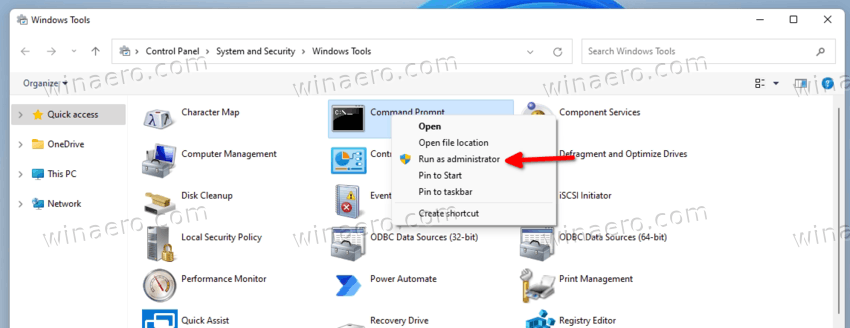
Another quick and easy way to run the Command Prompt as Administrator is to use Windows Search.
Open Elevated Command Prompt from Windows Search
- Click the search icon on the taskbar or use Win + S buttons, or start typing right in the Start menu.
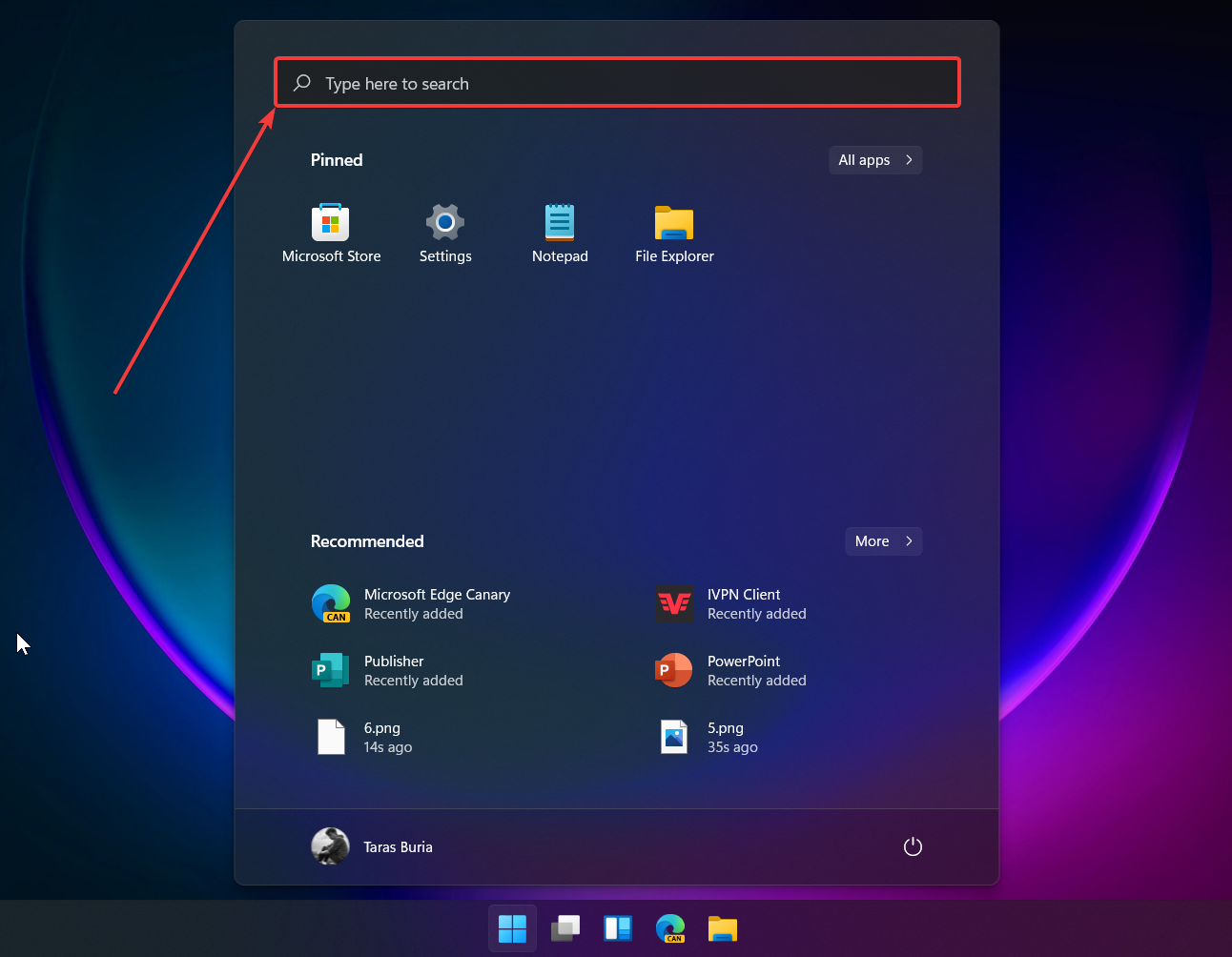
- Enter cmd. Windows will show the app in the search results.
- Click Run as Administrator on the right to open a new elevated command prompt. Alternatively, you can press the Ctrl + Shift + Enter keys on the keyboard.
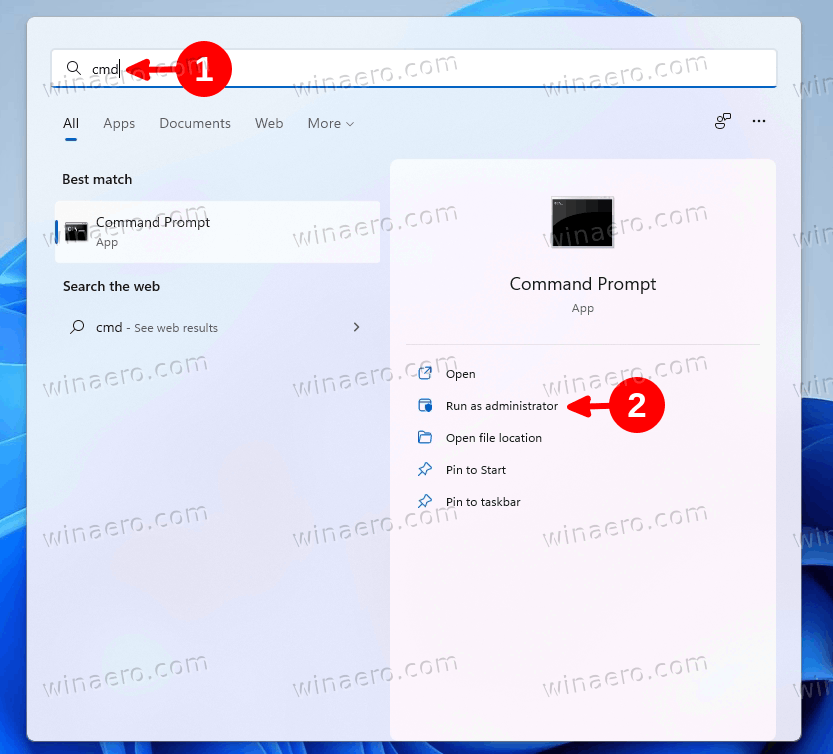
Open Command Prompt as Administrator from the Taskbar
If you already have a Command Prompt window open, you can press and hold the Ctrl and Shift keys on the keyboard, and click its icon in the taskbar. This will instantly open a new Command Prompt instance running as Administrator.

If you frequently use Command Prompt in Windows 11, you can pin it to the taskbar to access the app with one click. Right-click the running app icon on the taskbar and click "Pin to taskbar."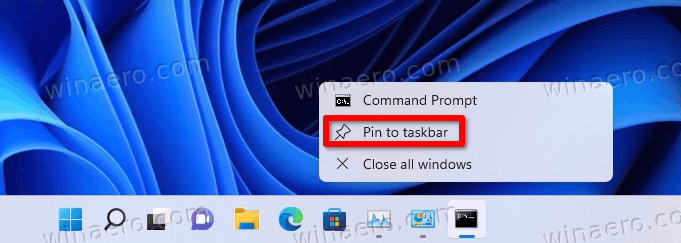
After that, you can use the pinned icon to launch Command Prompt as Admin (elevated). Press and hold the Ctrl and Shift keys simultaneously, and click on the pinned cmd.exe icon in the taskbar.
Using File Explorer
The command prompt in Windows 11 is still an executable file, cmd.exe. Thus allows you to run it directly from File Explorer or any other file manager.
- Open File Explorer (Win + E).
- Navigate to the C:\Windows\system32 folder.
- Locate the cmd.exe file, right-click it and select Run as Administrator.
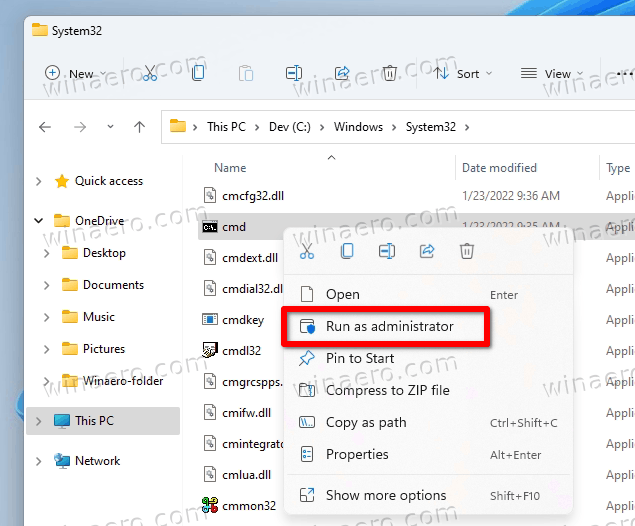
This will instantly launch it elevated.
A shortcut on the desktop is one more way to open Command Prompt as Administrator.
Always Open Command Prompt as Administrator in Windows 11
- Right-click anywhere on the desktop or inside a folder and select New > Shortcut.
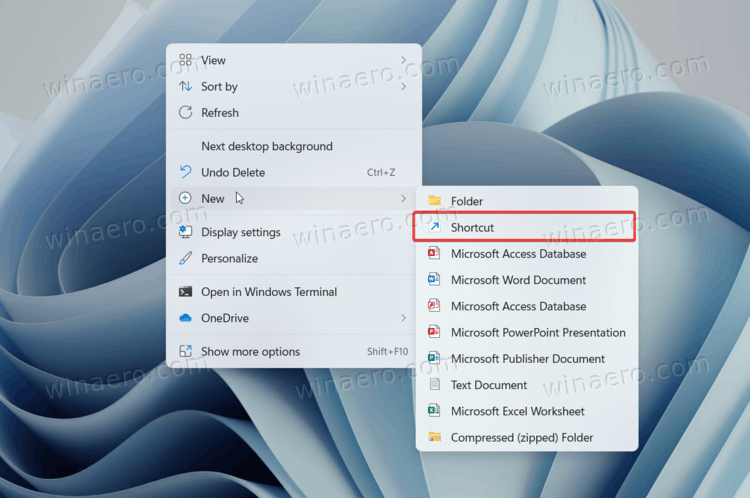
- In the Create shortcut dialog, enter
cmd.exein the "Type the location..." box, and click Next.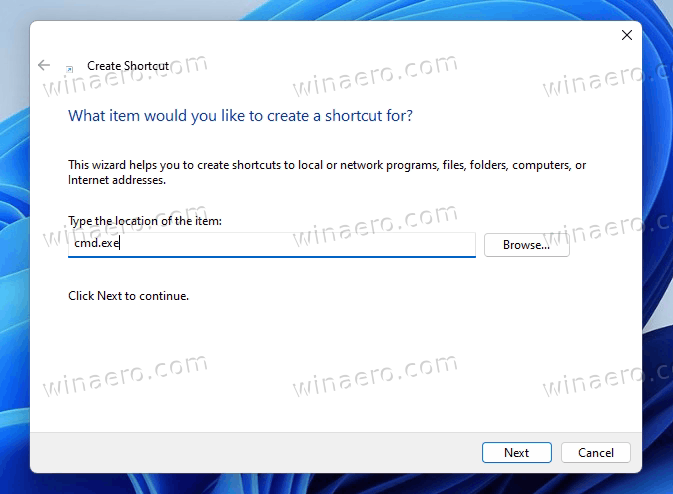
- Name your shortcut as "Command Prompt (Admin)" and click Finish.
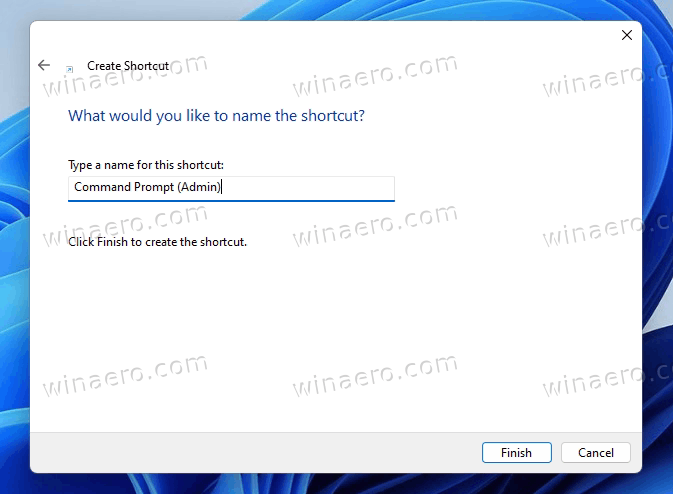
- Now, right-click the shortcut you have created and select Properties.
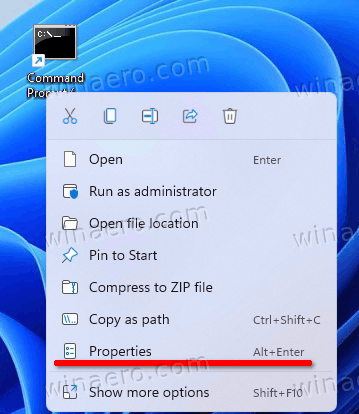
- On the Shortcut tab, click the Advanced button.
- In the next window, enable the "Run as Administrator" option.
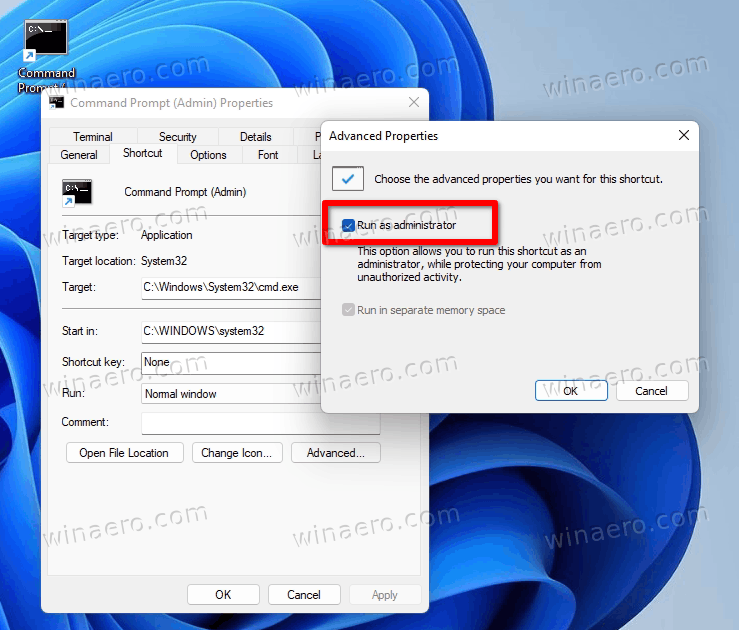
- Click OK to save the changes.
That is it. Now you can open Command Prompt as Admin in Windows 11 using the desktop shortcut.
Tip: If you want to pin this elevated shortcut to the taskbar, simply right-click your shortcut and select Show more options, then click Pin to taskbar.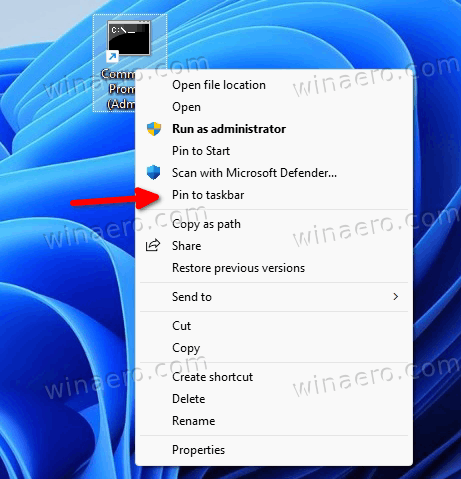
Always Run Command Prompt as Administrator with Windows Terminal
Make sure you have the latest version of Windows Terminal. You need release 1.13 or newer. To check your current Windows Terminal version, launch the app and enter wt -v. Update Windows Terminal to a more recent version if required.
To always run Command Prompt as Administrator using Windows Terminal, do the following.
- Click the button with an arrow-down icon on the tab strip and select Settings. Alternatively, press Ctrl + , (comma).
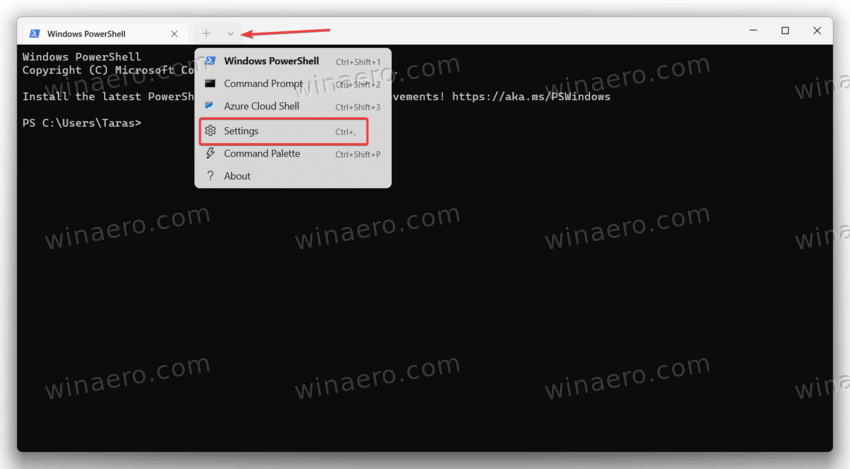
- Click Command Prompt on the left panel. Note: Command Prompt is just an example. You can set any other profile to run with elevated privileges when you launch Terminal.
- Find the "Run this profile as Administrator" option and toggle it on.
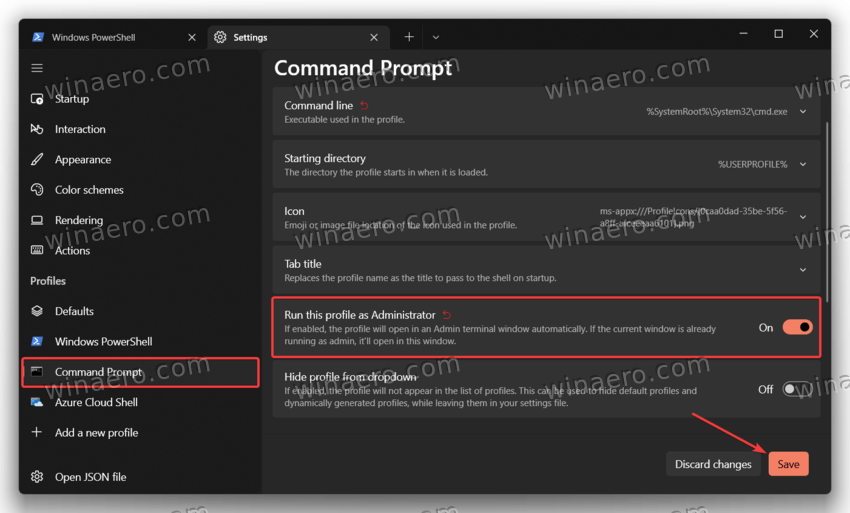
- Click Save to apply changes.
Now you can set Command Prompt as the default Windows Terminal profile. That will ensure Terminal launches as Command Prompt.
Set Command Prompt as the default Windows Terminal profile
- Press Ctrl + , (comma) to go to Windows Terminal Settings.
- Click Startup.
- Find the Default profile option and change it to Command Prompt (or any other profile you want to run with elevated privileges on launch).
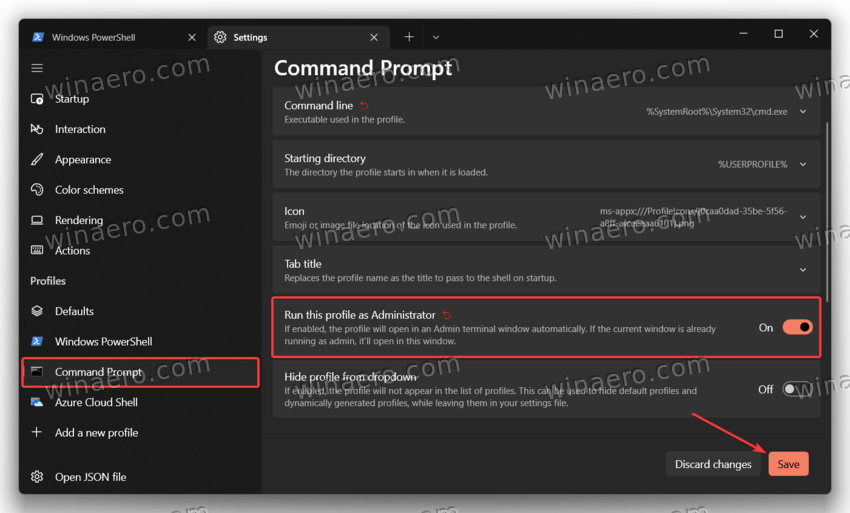
- Click Save to apply the changes.
One more option
You can edit Windows Terminal settings within the app or its JSON config file. The latter is a more complicated feat.
- Open Windows Terminal and press Ctrl + , (comma) to open Settings.
- Click Open JSON file.
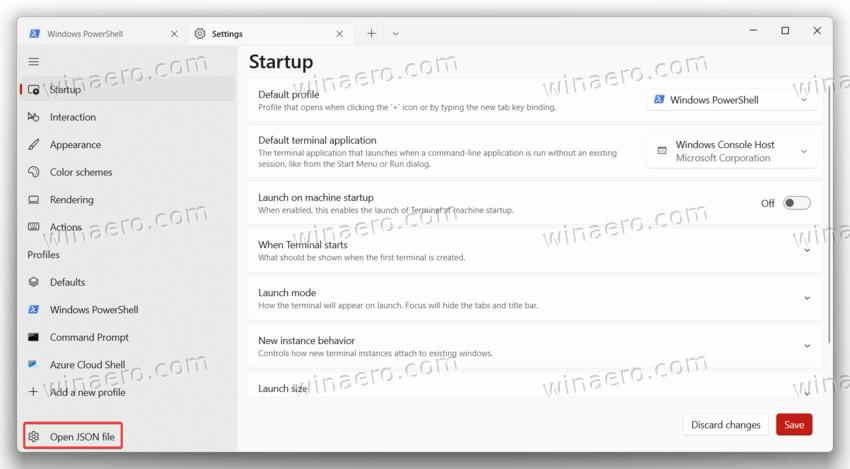
- Find Command Prompt in profiles list.
- Add
"elevate": true,(don't forget to add comma).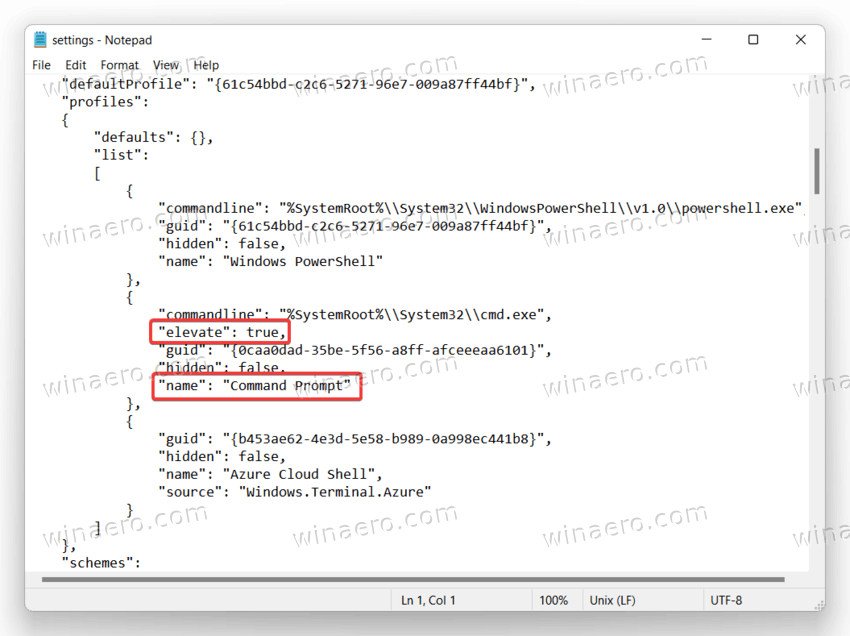
- Save the changes and close Notepad or whatever app you use to edit the file.
And that is how you make Windows Terminal always run Command Prompt as Administrator. Now, regardless of how you launch Terminal (elevated or without Administrative privileges), Command Prompt will run as Administrator. This will be indicated by a small shield icon in the upper left corner of the Terminal window.
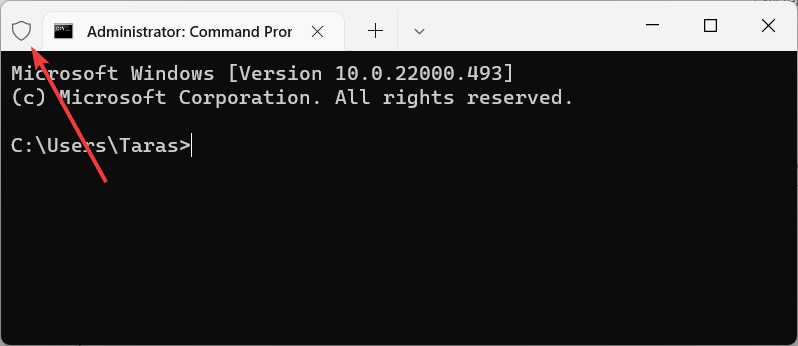
Note that when doing this, Windows will ask you to confirm the launch with User Account Control (UAC).
Pinning a shortcut to the taskbar is not the only quick way to open an elevated command prompt. You can add Command Prompt to the context menu.
To add Command Prompt as Administrator to the context menu in Windows 11, do the following.
- Download the REG files using this link.
- Double-click the file
Add Open Command Prompt Here As Administrator.reg.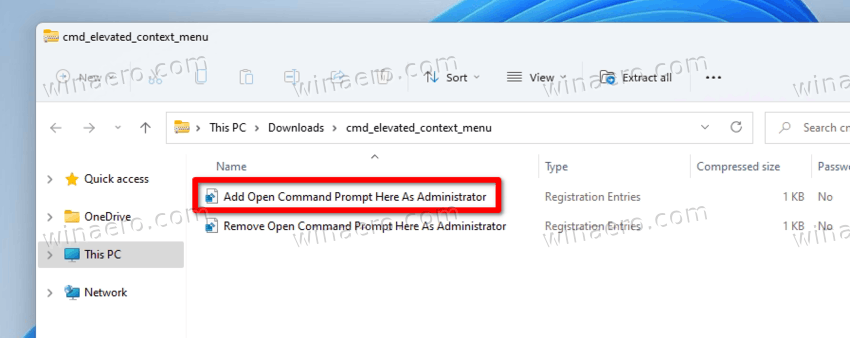
- Confirm the UAC prompt.
- Now, right-click any folder and select Show more options > Open Command Prompt here as administrator.
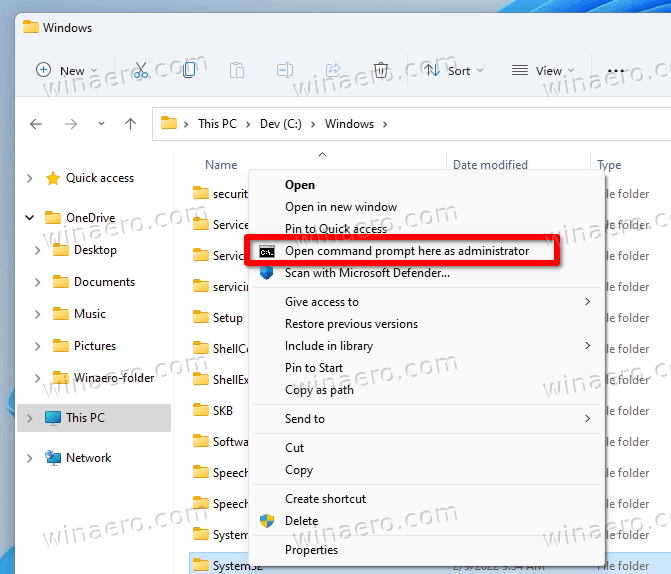
The undo file is included in the archive. Double-click on the Remove Open Command Prompt here as administrator.reg to delete the command from the context menu.
You can save your time using Winaero Tweaker. The app allows you to add the elevated PowerShell item to the context menu with a couple of clicks.
- Download Winaero Tweaker and launch it.
- Open the Context Menu section in the left panel of the window.
- Click Add Command Prompt as Administrator.
- Place a checkmark next to the "Add Command Prompt to the context menu" option.
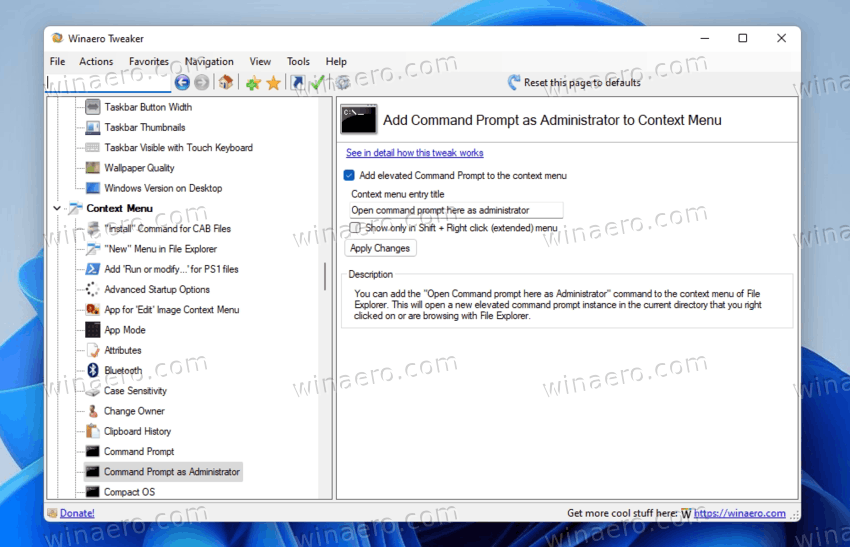
- Click Apply changes.
- Now open any folder and right-click anywhere. Select Show More options. and see the new item you just added.
Now you know all ways to open Command Prompt as Administrator in Windows 11. Any of those methods will work the same, so you use the most convenient one to you.
Support us
Winaero greatly relies on your support. You can help the site keep bringing you interesting and useful content and software by using these options:
